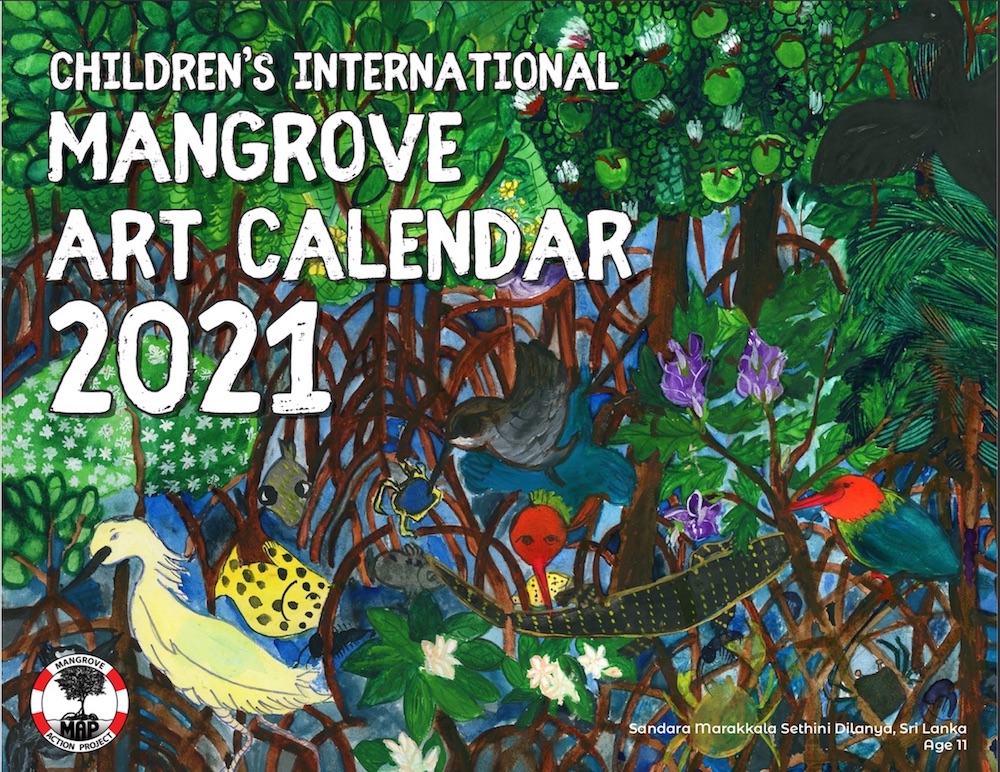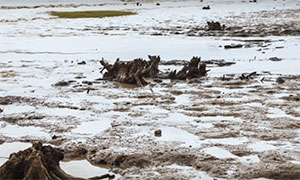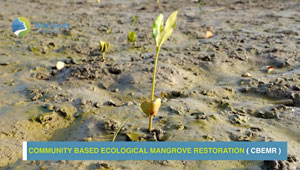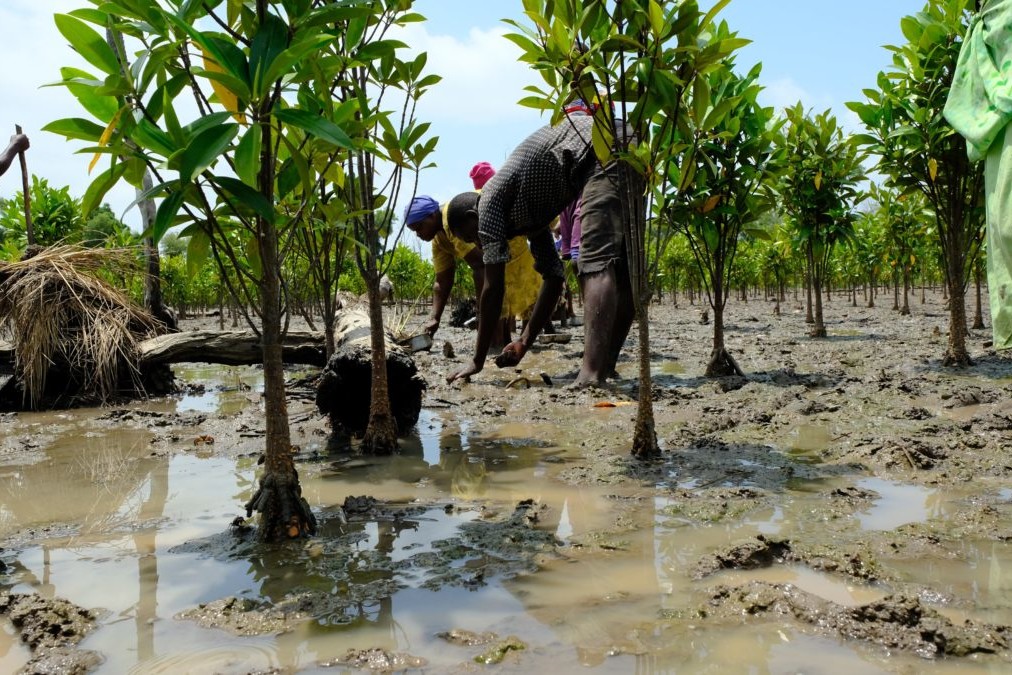|
The MAP News
510th Edition Dec 19, 2020 |
|
|
Mangrove Action Project Named Winner of the 2020.ORG - Advancing Environmental Sustainability  USA - Public Interest Registry (PIR), the People behind .ORG, today named Mangrove Action Project as one of the 10 winners of the 2nd annual .ORG Impact Awards. The mission-driven organization was honored in the Advancing Environmental Sustainability category for its work to protect the world’s mangrove forests. For more information, please visit mangroveactionproject.org. Mangrove Action Project will receive a $5,000 USD donation to the charity of their choice and will be honored later today as part of the “10 Days of .ORG” online experience that celebrates the range of achievements that have healed, inspired, transformed and connected communities over the past year. Each day of the 10-day celebration placed a spotlight on an award-winning organization or individual making our communities a better place. More than 500 organizations and individuals submitted entries to the 2020 .ORG Impact Awards. Submissions were reviewed and scored by a panel of judges who are leaders in the Internet, non-profit and marketing sectors. READ MORE AFRICA Egypt's mangroves project achieves environmental, climate, economic gains EGYPT - Egypt's national project to expand mangrove forests along the coast of the Red Sea is meant to improve the environmental conditions, address climate change risks and achieve economic gains, an Egyptian official told Xinhua in a recent interview. Funded by the Ministry of Higher Education and Scientific Research and implemented by the Desert Research Center and Red Sea Province, the project was launched in April with the aim of turning the coastal area into an outstanding tourist attraction, said Sayed Khalifa, director of the Mangrove Planting Project in Red Sea Province. Under the plan, Egypt will plant 210 hectares of mangrove trees along the Red Sea coast in Hamata, Safaga and Shalateen areas as well as Nabq Nature Reserve in South Sinai Province. Four plant nurseries were established to cultivate 50,000 seedlings every year, Khalifa said, adding 300,000 mangrove trees will be finally grown. "Mangroves currently cover an area of some 5,000 square meters across Egypt," Khalifa said, noting the North African country is home to two types of the world's 14 species of mangroves. The national project has also boosted ecotourism in the provinces of Red Sea and South Sinai, as most of the ecotourist attractions in Egypt are located in the two provinces, according to Khalifa. READ MORE AMERICAS Hurricane Maria Killed Mangroves Months After Storm 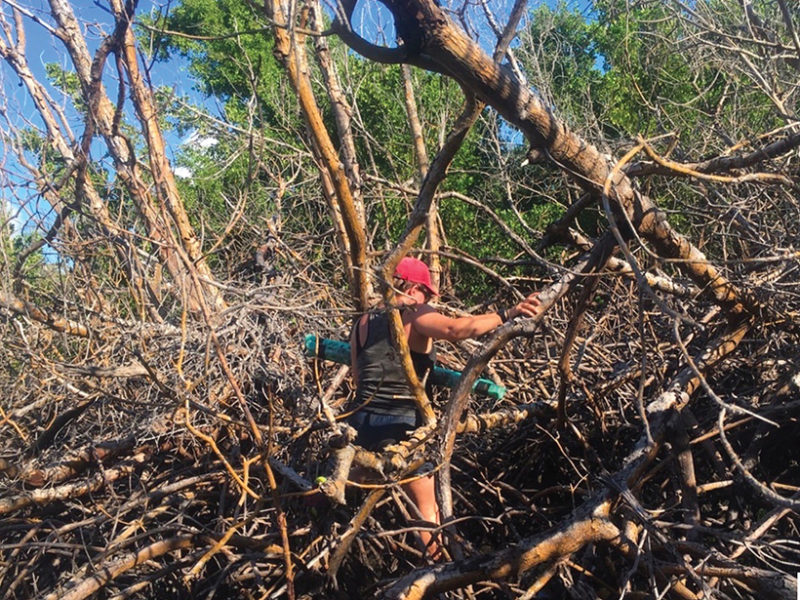 PUERTO RICO - When Hurricane Maria tore through the Caribbean in September 2017 as a category 5 storm, it destroyed livelihoods, infrastructure, and entire ecosystems. On the small island of Vieques, east of Puerto Rico, coastal mangrove forests were buffered from the initial onslaught of wind and seemed to survive. But after several months, huge numbers of trees died, leaving the coast more vulnerable to flooding and erosion from future storms. Research now points to a surprising cause for this delayed death: trapped freshwater left over from Maria’s intense rainfall, which disrupted the balance of salinity in the wetland. An overgrowth of mangroves in a poorly connected inlet on the island blocked this plug of freshwater in a connecting lagoon, which sentenced the mangroves to a slow, unsalty death. To quantify their observations, the researchers extracted sediment cores and measured turbidity and water levels in the mangrove lagoon and the inlet joining it to the ocean. Their sensors picked up restrictions in flow between the ocean and the lagoon, meaning that freshwater dumped by the hurricane might have been trapped in the interior wetland. When they analyzed the cores, the researchers found sandy deposits that predated Maria—potential evidence of a former inlet with better flow to and from the sea, said Griswold. READ MORE Mangrove bacteria turns sludge into bioplastics  USA - The United States generates seven million tons of sewage sludge annually, enough to fill 2,500 Olympic-sized swimming pools. While a portion of this waste is repurposed for manure and other land applications, a substantial amount is still disposed of in landfills. In the journal American Chemical Society (ACS) Omega, the researchers report that the bacterium Zobellella denitrificans ZD1, found in mangroves, can consume sludge and wastewater to produce polyhydroxybutyrate, a type of biopolymer for use in lieu of petroleum-based plastics. In addition to reducing the burden on landfills and the environment, the researchers say Zobellella denitrificans ZD1 offers a way to cut down upstream costs for bioplastics manufacturing, a step toward making them more competitively priced against regular plastics. “The price of raw materials to cultivate biopolymer-producing bacteria accounts for 25-45% of the total production cost of manufacturing bioplastics. Certainly, this cost can be greatly reduced if we can tap into an alternate resource that is cheaper and readily obtainable,” says Kung-Hui (Bella) Chu, professor in the civil and environmental engineering department at Texas A&M University. READ MORE ASIA New cases of mangrove die-off in Maldives  MALDIVES - The Save Maldives campaign finds the continuing culture of total disregard to environmental sustainability by the administration of President Ibrahim Mohamed Solih extremely disturbing, with infrastructure projects across the country causing catastrophic loss and damage to ecosystems. The Maldives experienced its worst environmental loss and damage during the administration of President Yameen Abdul Gayyoom, which we observe is being continued unchanged, by the current administration. On 11 February 2020, the Environment and Climate Change Committee of the People’s Majlis produced a report motivated by the current erosion crisis occurring across the Maldives, to call on the international community to expedite efforts to address global climate change. On 12 February 2020, using the report, the Majlis voted on a motion for the Maldives to declare a “climate emergency”. Despite the adoption of this declaration, the Majlis continues to fail to hold the government accountable for engaging in ongoing business-as-usual environmental destruction, as demonstrated by the case of Maafaru airport expansion. The continuation of irreversible destruction of ecosystems in Maldives while simultaneously declaring a national “climate emergency” makes a mockery of the State’s own obligations and commitment to climate action to address the climate crisis. Despite being among the first nations to become party to the UN Convention on Biological Diversity in 1993 to conserve and sustain biodiversity, Maldives is failing in its commitments to protect nature, while also flouting its commitments to the UN sustainable development goals. READ MORE Plastic waste smothering vital mangrove forests of Java 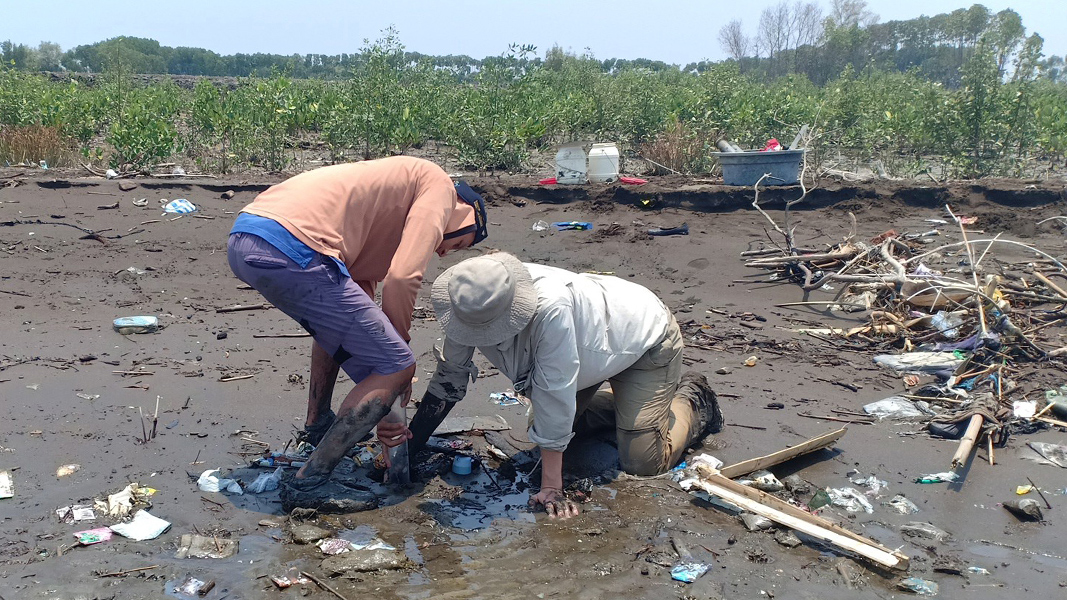 INDONESIA - he coastal mangrove forests of Java, which provide natural protection against erosion, are being suffocated by vast swathes of plastic waste. New research from the Royal Netherlands Institute of Sea Research (NIOZ), led by researcher Celine van Bijsterveldt, finds that without better waste management, restoration of this green protection belt is impossible. Van Bijsterveldt has been monitoring the accumulation of plastic waste in Indonesian mangrove forests for many years, describing them as ‘a perfect plastic trap.’ Household waste, carried from the inland to the coastal area by local rivers, gets stuck in the last stronghold between land and sea. In areas completely covered in plastic, trees suffocate. “On average, we found 27 plastic items per square metre,” said van Bijsterveldt. “The roots change course when they are obstructed. They grow around the plastic. When half of the forest floor is covered, the tree still gets enough oxygen to keep its leaves. We’ve seen roots stuck inside plastic bags. Trying to find a way out, they just grow in circles. Eventually trees that cannot outgrow the plastic die.” At several locations along the northern coastline of Java, plastic covered half of the forest floor and was found buried as deep as 35cm inside the sediment. Plastic that has been ensnared in these upper layers further decreases access to oxygen for the mangroves. READ MORE Tide turning for Mekong protesters  THAILAND - After almost two decades of campaigning against hydro-dams and water projects built on the Mekong River, local civic groups and conservationists finally launched the "Mekong People's Forum," with the hope of moving their campaign to a policy level. The forum was held on Dec 1–2 in Chiang Khong district, and attended by 200 people including local villagers, conservationists, journalists, and the US and Australian embassies in Bangkok. The Mekong People's forum is the name not just of the event held last week but also a movement of civic groups located in eight provinces. In the past, these groups had no name but they have now come together under the general name "Mekong People's Forum." The organiser also had extended an invitation to the China embassy in Bangkok, as the country also built 11 dams on the upper stretch of the Mekong River, and the Lancang River in Chinese territory. READ MORE Ministry looks into tycoon’s right to 400ha of mangroves  CAMBODIA - The Ministry of Agriculture, Forestry and Fisheries is investigating whether a tycoon has the right to occupy more than 400ha of flooded mangrove forest in the Chrolong community area in Teuk La’ak commune in Preah Sihanouk province’s Prey Nop district. The investigation follows a series of local media reports alleging that tycoon Hann Khieng, who holds the honorific oknha title, received 28 land titles for the more than 400ha even after the government reclassified it as state-owned private land to be allocated for 26 families in 2017. Ouch Vutha, director of the Fisheries Department under the agriculture ministry, told The Post on December 15 the ministry had set up a working group to gather documents related to the tycoon’s occupation of the flooded mangrove forest. “First, I will check the titles to see if they are related to that location and determine whether they affect the mangrove forest. I will also check whether they affect the community. So it is too early for me to comment further on it until the documents are collected and checked first,” he said. READ MORE Expanding mangroves  PAKISTAN - Pakistan is the only country in the world to have increased the mangrove cover, a recent study has revealed. The study conducted by the Worldwide Fund for Nature-Pakistan in collaboration with Institute of Space Technology and Society for Environment and Mangrove Protection and Welfare Association shows that Pakistan has increased the area under mangrove trees over the past 30 years In 1990, mangroves were spread over an area of 477 square kilometres and now they cover an area of 1,463 square kms — a significant increase of 300%. This is indeed an achievement considering the fact that mangrove forests across the world are disappearing. Since 95% of the country’s mangrove forests are in the Indus delta in Sindh, the credit for the spectacular achievement goes to the provincial government and non-governmental organisations. The mangrove cover in the Indus delta has increased by 986.36 over the past three decades, expanding by 3.74% on an average annually. In Pakistan, two of the eight indigenous species of mangroves have become extinct. Mangroves have disappeared mainly as a result of human activities such as cutting mangrove trees for firewood, grazing and overfishing. Climate change too is contributing to the destruction of mangroves. READ MORE EUROPE EU grants €9.9m to FDA and WIA for wetland conservation 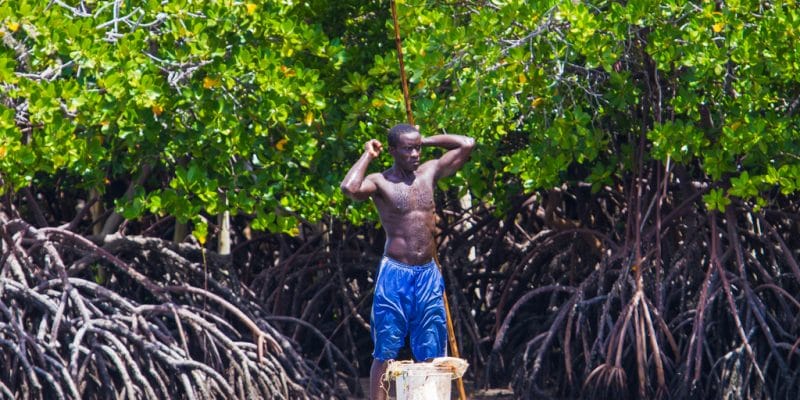 EUROPEAN UNION - In West Africa, wetlands, especially mangroves, are increasingly threatened by human activity. In order to conserve these areas, which are nevertheless rich in biodiversity, an awareness-raising programme will be implemented by various actors in the sub-region, and financed via a €9.9 million grant from the European Union (EU). “Awareness-raising”. This is the solution advocated by Liberia’s Forestry Development Authority (FDA) and Wetlands International Africa (WIA) to save West Africa’s wetlands. For many years, these natural spaces, which are essential to the proper functioning of the ecosystem, have been weakened by man through pollution and overexploitation. However, these areas composed of mangroves absorb about 50% of the carbon dioxide emitted by human activities. They also serve as breeding grounds for many species of fish and other aquatic animals. The FDA and WIA have received €9.9 million from the European Union (EU) to carry out their awareness-raising programme. The grant was awarded following an application issued on December 5th, 2020 by the two institutions. A total of nine West African countries will benefit from the wetland protection and conservation project which will be implemented by different stakeholders. They will have to submit their action plans before receiving the funding. READ MORE OCEANA Mangroves lock away carbon  AUSTRALIA - High levels of dissolved calcium carbonate present in their bedrock indicate that Red Sea mangroves are capable of removing more carbon than previously thought, KAUST researchers have found. The study's findings highlight the need to consider calcium carbonate dissolution in mangroves growing on carbonate platforms as an important carbon storage mechanism. Blue carbon ecosystems, such as mangroves, saltmarshes and seagrass beds, sequester large amounts of carbon dioxide (CO2) from the atmosphere in the form of organic carbon locked in their soils. In the Red Sea and much of the tropics, mangroves grow on calcium carbonate sediments formed by shells and skeletons of marine organisms dating back to the Pleistocene, about one hundred thousand years ago. The dissolution of calcium carbonate in seawater is a source of total alkalinity, which increases the ocean's capacity to store CO2 from the atmosphere. Previous research has found that the relatively small mangroves of the Red Sea bury ten times less organic carbon in their sediments than the global average for mangroves. These studies, however, did not examine dissolved calcium carbonate as a carbon sink -- a concept that had been previously hypothesized but not quantified, until now. READ MORE FEATURED VIDEO Mangrove Rangers advocate for the ‘heart of Cayman’ 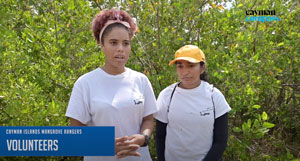 LAST WORD 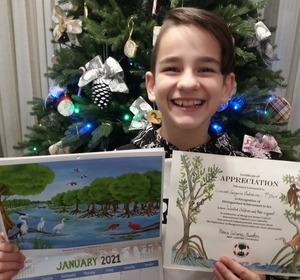 Hi MAP Team Here I am sending a photo of Gouras from Greece. First calendar that reaches internationally to a winner of 2021 calendar. He is 11 years old. So talented and intelligent, with a great smile. Monica |
FEATURE ACTION ALERTTell the Japan International Cooperation Agency not to fund polluting coal – TAKE ACTIONMORE ACTION
|
|
Mangrove Action Project Click here to view past newsletters
|
|
Search News Archive
Saturday, December 19, 2020
MAP News Issue #510 - Dec 19, 2020
Saturday, December 5, 2020
MAP News Issue #509 - Dec 05, 2020
|
The MAP News
509th Edition Dec 5, 2020 |
|
|
Students win multiple prizes at the 19th MAP Art Competition  MALDIVES - Students of Neykurendhoo, Haa Dhaalu Atoll, won prestigious awards in the 19th Mangrove Art Contest organized by the Mangrove Action Project (MAP) in September 2020. After competing with submissions from 34 countries, three students from Neykurendhoo School were among those awarded first, second, and third places. Students between the ages of 6 to 16 participated in the competition and submitted a total of 71 artworks. This year’s theme of the international competition, held annually to raise awareness on the importance of mangroves, was “ why mangroves are important to the mangrove communities and the world”. 2020 marks the first time Maldives participated in the competition, and Neykurendhoo School was the sole official representation from the archipelago. MAP is a US-based non-profit organisation that has worked on preserving, conserving and restoring the world’s mangrove forests for over 25 years. Their art contest, this year, comes at a time when extraordinary die-offs have been observed at eleven mangrove wetlands across the Maldives, including the mangroves in Neykurendhoo. READ MORE Have you ordered your calendar yet? Supplies are limited, get your collectors edition HERE GLOBAL International Volunteer Day 5 December: Together We Can Through Volunteering  GLOBAL: Over the last months, as the COVID-19 pandemic has ravaged across the world, volunteers have been at the forefront of medical, community and societal responses. Headlines in the world’s media have paid credit to volunteers for all kinds of work, from helping to provide medical care, to doing shopping for vulnerable neighbours, or checking up on elderly people living alone. The COVID-19 Strategic Preparedness and Response Plan by the WHO identifies community volunteers as key stakeholders for risk communication and community engagement. This indicates the valuable and great effort the WHO believes volunteers are doing during COVID-19. This year's IVD campaign thanks volunteers worldwide and also sheds light on the difficulties and needs of volunteers during the pandemic. Showing the impact of volunteers in their communities during this crisis, we will reach to all corners of the globe with the message "Together We Can Through Volunteering." THANK YOU VOLUNTEERS! READ MORE AFRICA Conserving biodiversity: manatees of Gabon in West-Central Africa 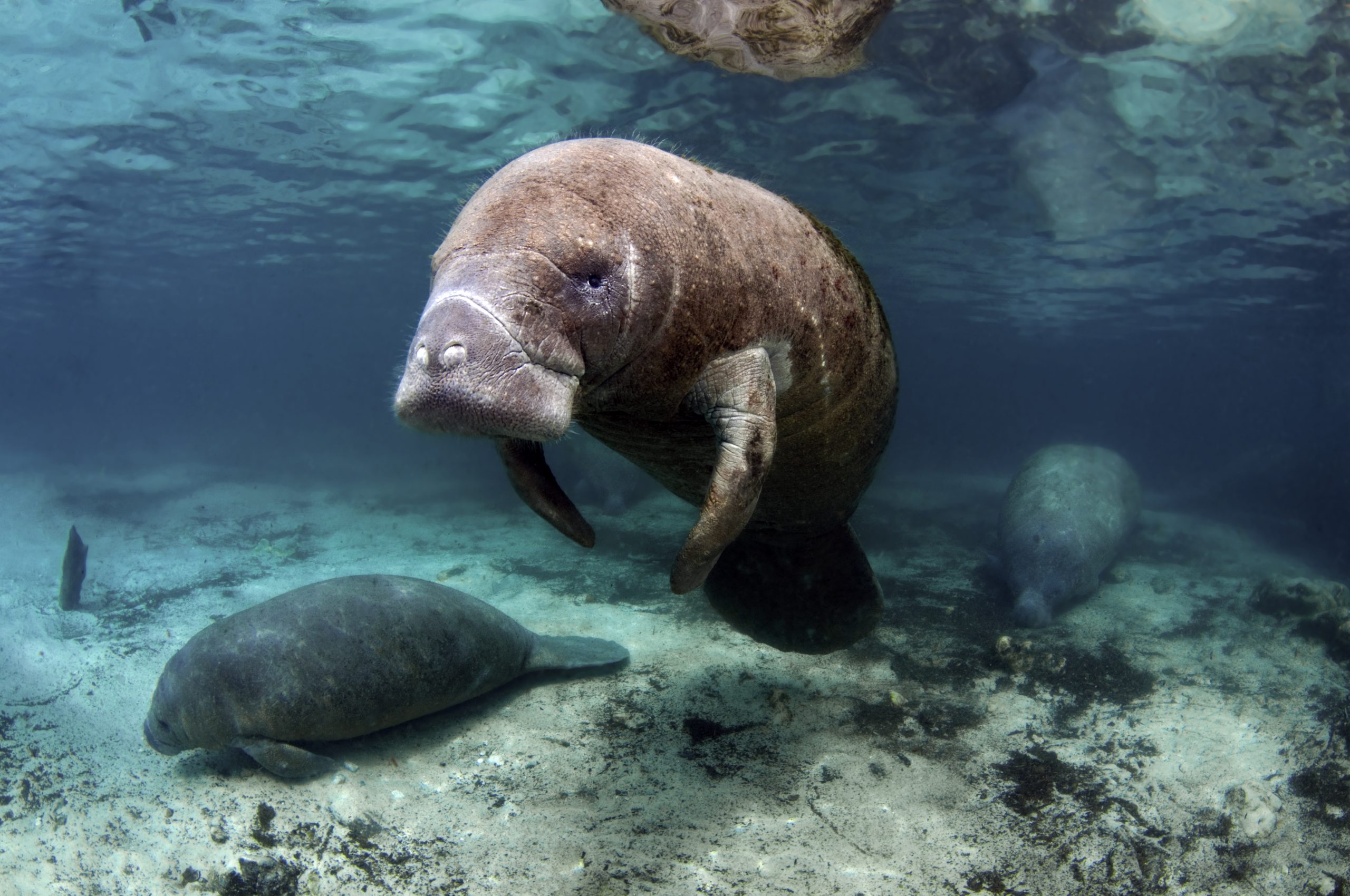 GABON - After its disappearance from Mondah Bay near the Akanda National Park, environmentalists drew the attention of the national community to the disappearance of the manatee from Bas-Ogooué. In Gabon, the manatee is a species often observed in the following rivers and lagoons: Low-Ogooué, Banio, Nkomi, Iguela and Ndougou. Their disappearance from Mondah Bay and Tsini rivers is primarily due to poaching According to national legislation, manatees are fully protected in Gabon, with the capture and hunting of manatees strictly prohibited and any person in possession of trophies subject to a fine of roughly $10,000 and potential imprisonment The manatee is an aquatic mammal that lives only near coastlines and in some wetlands or rivers, almost exclusively in the intertropical belt. It is a peaceful mammal that needs water of at least 20 ° C to live. It has a mass of 400 to 550 kg, a length ranging from 2.8 to 3.0 m, and an average weight of 1775 kg. Females tend to be larger and heavier. Females begin to reproduce around the age of 7, with a long pregnancy period of about 13 months. When born, baby manatees weigh roughly 30 kg. READ MORE AMERICAS Science is Saving the Mangrove Forests 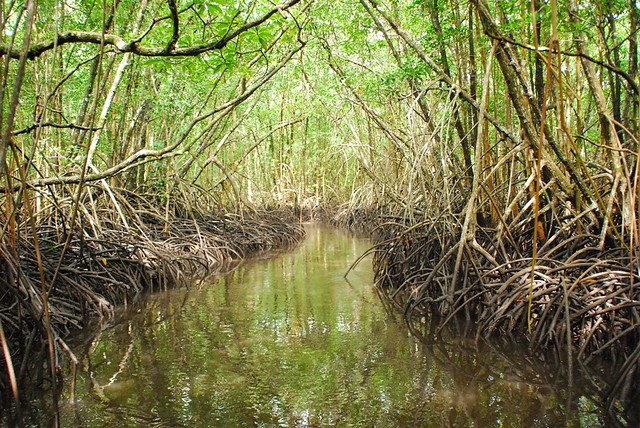 USA - “A lot of Pacific Rim countries are working hard to conserve and restore their mangrove forests, but rising sea levels—a consequence of the changing global climate—remain a problem,” said Richard MacKenzie, a USDA Forest Service aquatic ecologist who works at the agency’s Institute of Pacific Islands Forestry in Hawaii. They are eager to save their mangroves not only for the benefits they have long provided, but also because their tremendous capacity for storing carbon offsets greenhouse gas emissions from human activity. MacKenzie and other U.S. scientists began working with Micronesia 15 years ago to help the country better manage its forests. Since then, their work has expanded to Cambodia, Indonesia, Vietnam, the Philippines, Papua New Guinea, Madagascar, and India. To assist in restoring and preserving of their mangrove forests, MacKenzie and his research partners have collected data from research sites in the region. So far, the research is showing a couple of interesting findings. READ MORE Volunteers plant mangrove bushes to add nesting habitat  USA - More nesting accommodations are waiting for brown pelicans at one of the largest nesting colonies in the Sportsman’s Paradise. Volunteers from several groups and Shell Oil worked Nov. 12-13 to add nesting habitat to Queen Bess Island Wildlife Refuge in the southern part of Barataria Bay. The Louisiana Wildlife and Fisheries Foundation supplied 4,350 mangrove plants and 2,500 matrimony vines in a concerted effort to increase nesting habitat for pelicans and other colonial waterbirds on the island. The state wildlife refuge underwent a major restoration project earlier this year to add acreage for nesting purposes, according to the state Department of Wildlife and Fisheries. Adding mangroves and matrimony vine plants was the next step to creating even more nesting sites for the birds. “We want to thank our many partners who assisted us in the planting project. Queen Bess is again a thriving nesting colony and our partnerships are a vital reason why,” LDWF Secretary Jack Montoucet said. “The number of pelicans and other birds that used the island last spring and summer far exceeded our expectations. The addition of this habitat will make it feel even better for nesting opportunity next spring.” READ MORE ASIA Mangroves seen more beneficial to seaside residents than fish farms  PHILIPPINES – Mangroves are more beneficial to fishing communities than fish farming, which employs few workers, a marine scientist said at an online forum organized by Oceana Philippines. Dr. Jurgenne H. Primavera said Wednesday that mangroves bring more socio-economic opportunity and protection from storms and flooding. “With mangroves, there is social equity. Many more people will benefit, including small-scale fishers. In contrast, the fish pond industry employs very few full time workers… and seasonal (ones),” Ms. Primavera, a mangrove expert, said. Citing a Zoological Society of London study, she said mangroves generate fishing and forestry products, benefiting small-scale fishing communities along the coast. “Fish ponds (are for) food security,” she said, citing the intensive farming of milkfish and tilapia.“Pero iyon lang (That is all),” she said, noting the absence of other benefits. Ms. Primavera added that she did not foresee “any massive displacement of fishpond workers,” should fish farms be repurposed for the cultivation of mangrove forests. READ MORE Concrete jungle threatens mangroves on Pakistan island 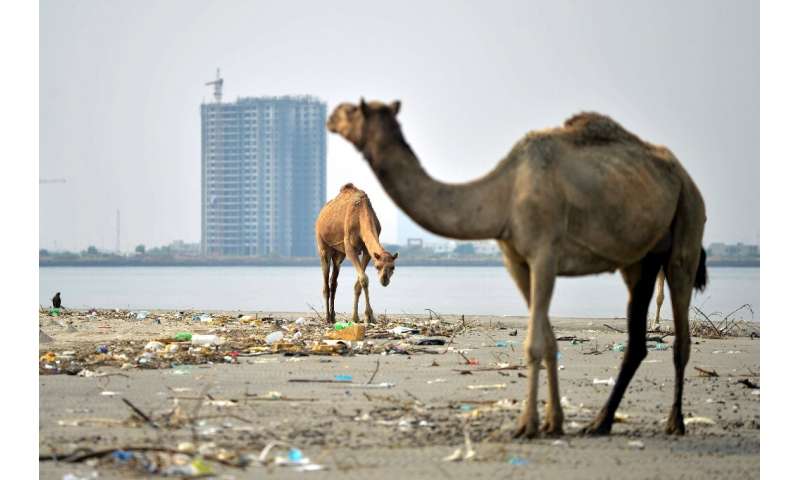 PAKISTAN - A short boat ride from the shores of Karachi, mangrove trees sprout along the quiet inlets of an uninhabited island that environmentalists say provides vital coastal protection to Pakistan's largest city. But the calm of Bundle Island, home to a few camels, is at risk, with Prime Minister Imran Khan determined to turn it into an enormous real-estate project to ease pressure on the expanding megacity home to 20 million people. The $50-billion housing development has pitted regional leaders against the central government, with local activists and lawmakers accusing the prime minister of reneging on pro-environment promises. "Let nature restore itself and (do) not dream of these big, grand cities," said Mahera Omar, an environmental film-maker from Karachi who enjoys kayaking around Bundle and meandering through the island's mangroves.READ MORE Transformation for Navi Mumbai mangroves: 7,000kg trash removed  INDIA - An environmental group has removed 7,000kg of trash from an 8,000 square metre mangrove patch in Navi Mumbai since August 15 with the help of the government and citizens. Trash was removed every Sunday for two hours as part of the initiative over the last 15 weeks. Organisers said footwear, medical waste, mercury bulbs, tube lights, liquor bottles, plastic, spoons, packaged water bottles, wafers packets had made their way through the creek and got stuck in the breathing roots of mangrove trees. Some of the waste was being recycled. “We, as citizens, need to take responsibility and ownership to take care of our own waste or step up and clean our natural areas. What we have managed to remove is not even 1% of the waste stuck in mangrove areas and microplastic daily entering our oceans,” said Dharmesh Barai, founder, Environment Life. READ MORE Abu Dhabi Plants Mangrove Forest To Reduce Carbon Footprint 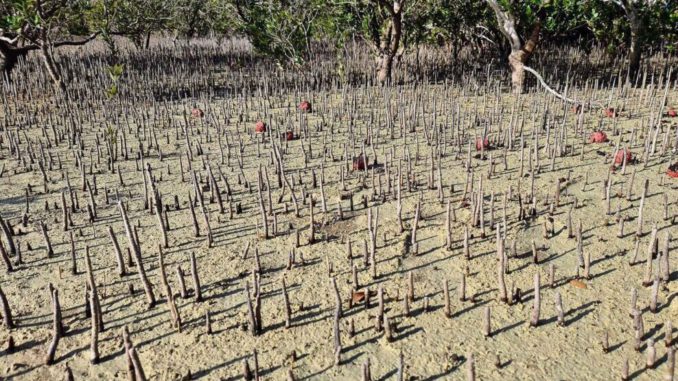 UAE - In an effort to reduce Abu Dhabi’s carbon footprint, the city is planting mangrove forests. By end of December, UAE-built drones will plant 4,000 mangrove seeds near global energy company ENGIE’s Mirfa power plant in Abu Dhabi, as well as monitor their growth over the next year. his is the first phase of the Blue Carbon Environmental and Social Responsibility project from Environment Agency Abu Dhabi (EAD). It encourages the growth of coastal ecosystems, including seagrasses, mangroves and salt marshes, that absorb carbon at a much faster rate — and can continue to do so for millions of years. “Blue carbon” is carbon captured by the world’s oceans and coastal ecosystem, according to the EAD. READ MORE EUROPE Mangroves in the battle against land degradation and water scarcity  EUROPE - In a recent example of biomimicry, researchers supported by the EU-funded HYDROUSA project have used mangroves as their source of inspiration to tackle the problem of land degradation and water scarcity in coastal areas in the Mediterranean. Called Mangrove Still, the mangrove-inspired technology platform was developed by HYDROUSA project partner Planet. According to environmental engineer and Planet co-founder Alessandro Bianciardi, mangrove trees grow in saline water and are the first to colonise an empty coast because they’re able to desalinate water. As they grow, the mangroves create conditions conducive for other species to thrive, and, together with these species, they gradually build an entire ecosystem where none had existed. The idea, as Bianciardi goes on to explain in an episode of the CNBC TV show ‘Sustainable Energy’, was to reproduce this process using technology. The team improved current solar still technology by looking at how plants absorb light, how they use capillarity to suck up water, and how certain organisms regulate temperature or absorb moisture from the air. The Mangrove Still generates distilled water from saline water through a process of evaporation and condensation run by sunlight. READ MORE Bamboo and rattan’s contribution to sustainable development  EUROPE - A new five-year partnership signed today between the International Bamboo and Rattan Organization (INBAR) and the Food and Agriculture Organization of the United Nations that aims to scale up the benefits and opportunities that these fast growing tropical plants provide, including reducing rural poverty, increasing carbon sequestration, promoting biodiversity and land restoration, and the greening of the construction industry worldwide. "Through our (FAO and INBAR's) strengthened cooperation we will support Members improve food security and nutrition, transform agri-food systems, create employment and generate income while protecting biodiversity and ecosystems, also through the rational land use of hills and mountains, while addressing climate change and reducing soil erosion," said FAO Director-General QU Dongyu. "We will help countries use bamboo and rattan in an effective manner that contributes to achieving the Sustainable Development Goals," he added. The FAO-INBAR strategic alliance is particularly important and meaningful as "Africa and South Asia are the two regions that face the most serious problem of food security, while on the other hand they have some of the most abundant bamboo and rattan resources in the world," said Professor JIANG Zehui, Co-Chair of INBAR's Board of Trustees. INBAR will "spare no effort" to promote ways to "create a better world for all" in partnership with FAO, she added. READ MORE International lawyers draft plan to criminalise ecosystem destruction  EUROPE - International lawyers are drafting plans for a legally enforceable crime of ecocide – criminalising destruction of the world’s ecosystems – that is already attracting support from European countries and island nations at risk from rising sea levels. The panel coordinating the initiative is chaired by Prof Philippe Sands QC, of University College London, and Florence Mumba, a former judge at the international criminal court (ICC). The aim is to draw up a legal definition of “ecocide” that would complement other existing international offences such as crimes against humanity, war crimes and genocide. The project, convened by the Stop Ecocide Foundation at the request of Swedish parliamentarians, has been launched this month to coincide with the 75th anniversary of the opening of the Nuremberg war crimes trials of Nazi leaders in 1945. READ MORE |
FEATURE ACTION ALERTTell the Japan International Cooperation Agency not to fund polluting coal – TAKE ACTIONMORE ACTION
|
|
Mangrove Action Project Click here to view past newsletters
|
|
-
The community of adults and youth in Cayman Islands has come together recently to release a series of educational videos. Each is geared to...
-
By Alfredo Quarto, Program & Policy Director Co-founder, MAP There is a rather urgent situation concerning the bio-invasion of the Son...
-
By: Isabel Robinson, MAP Volunteer Intern Some months ago I decided to come to Thailand and do an internship in mangrove conservation, ...
MAP News Issue #596 = April 20, 2024
ENTRIES NOW OPEN! Mangrove Photography Awards 2024 10 Years Celebrating Mangroves GLOBAL - MAP has launched our 10th Mangrove Photograp...



